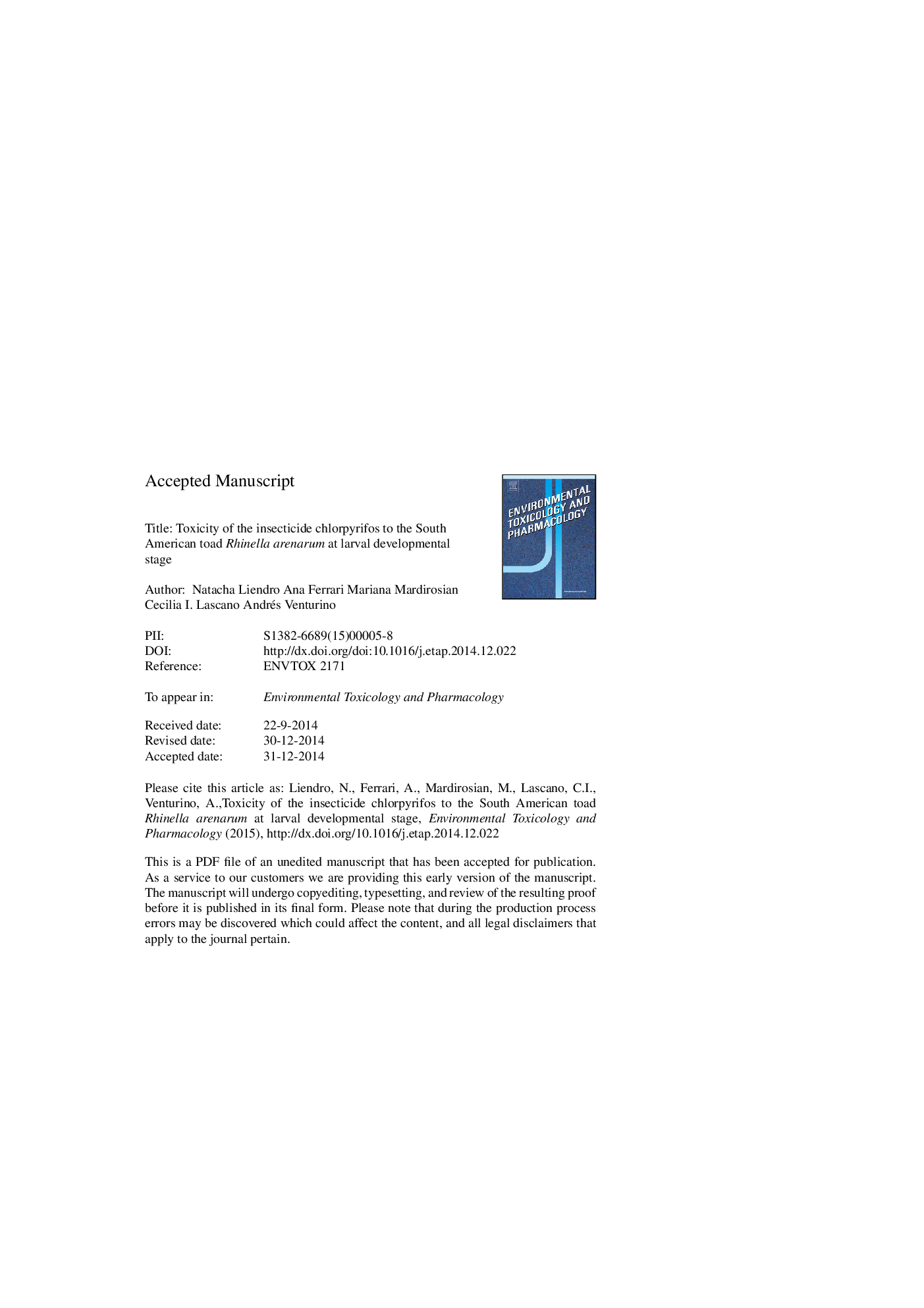| Article ID | Journal | Published Year | Pages | File Type |
|---|---|---|---|---|
| 5848791 | Environmental Toxicology and Pharmacology | 2015 | 35 Pages |
Abstract
Chlorpyrifos (CPF) is an insecticide widely used for pest control in the fruit-productive region of North Patagonia, Argentina, where it is found in superficial waters. The aim of this study was to establish the toxic effects of CPF in Rhinella arenarum toad larvae as a potentially exposed species. We determined the 96 h-LC50 (1.46 ± 0.27 mg/L), the LOEC (0.81 mg/L, LC10) and NOEC (0.43 mg/L, LC1) for CPF lethality as endpoint. We also analyzed biochemical biomarkers in larvae exposed to sublethal CPF concentrations. The IC50 for cholinesterase was 0.113 ± 0.026 mg/L, one order of magnitude lower than the LC50. Carboxylesterase activity was inhibited, buffering OP toxicity on cholinesterase. Reduced glutathione increased after 24 h as an antioxidant response, and decreased at 96 h together with catalase activity, due to oxidative stress. These biochemical effects suggest that environmentally relevant CPF concentrations pose a threat to R. arenarum larvae progression.
Keywords
Related Topics
Life Sciences
Environmental Science
Health, Toxicology and Mutagenesis
Authors
Natacha Liendro, Ana Ferrari, Mariana Mardirosian, Cecilia I. Lascano, Andrés Venturino,
